Building a network of rangeland health monitoring sites in East Africa
SLU PhD student Annrose Mwangi and rangeland botanist Musembi Kimeu collect data on grasses using the Land Degradation Surveillance Framework (LDSF) rangeland module. Photo credit: Kelvin Trautman/ICRAF
Rangeland Restoration in East Africa
In business, they say that “if you can’t measure it, you can’t manage it.” This approach emphasizes the value of using data to help understand which management strategies and practices are working and which are not, leading to stronger outcomes.
Making data-driven decisions is also critical for sustainable land management and restoration: i.e., understanding which land management and restoration practices work where.
The projects Restore4More (led by SLU and funded by Formas) and ‘Restoration of Rangeland Carbon Sinks for Increased Community Resilience and Agricultural Outcomes’ (led by ICRAF) have partnered up to build a network of rangeland health monitoring sites in East Africa. The goal is to foster data-driven decision making around rangeland restoration and sustainable management in the region.
The Importance of Monitoring Rangeland Health
Monitoring is a central pillar of adaptive land management - a structured, iterative process for land management decision-making. Data from monitoring tracks relevant land health indicators over time, which can then be used to evaluate the effectiveness of land management and restoration practices. Based on the results from this evaluation, planning and implementation are designed and adjusted accordingly to ensure that the objectives are met. Monitoring and adaptive land management encourage continuous co-learning and knowledge co-production, acknowledge complexity, uncertainty, and the importance of adapting to changing conditions, are action-oriented, and provide the foundation to improve future land management decisions.
There is no doubt that good data is critical to meaningful and effective land management and restoration. And yet, major land health data gaps still exist for some regions and ecosystems, hampering progress towards SDG 15 - Protect, restore and promote sustainable use of terrestrial ecosystems, sustainably manage forests, combat desertification, and halt and reverse land degradation and halt biodiversity loss. While forests have received great attention, rangeland ecosystems remain largely neglected despite their global relevance in terms of extent, biodiversity, and the provision of a broad range of vital ecosystem services.
In East Africa, rangelands—comprising lands in which the indigenous vegetation is predominantly grasses, grass-like plants, forbs, and woody perennials that are grazed or browsed by both livestock and wildlife—are the most prevalent land use system. They cover nearly 150 Mha across Kenya, Tanzania, and Uganda, representing 80%, 74%, and 44 % of their land area, respectively, and are vital to supporting the livelihoods of millions of people. However, the East African rangelands continue to face significant degradation, threatening biodiversity and the livelihoods of the people they support.
The restoration of degraded lands is a priority in East Africa. Kenya, Tanzania and Uganda have pledged to restore 5.1, 5.2 and 2.5 Mha, respectively, by 2030 as part of the African Forest Landscapes Restoration Initiative (AFR100). Kenya, through its ambitious 10-year National Landscape and Ecosystem Restoration Strategy, has recently committed to restoring 10.6 Mha of degraded forests and rangelands by 2032. In addition, some of their national Land Degradation Neutrality (LDN) targets, specifically target rangeland restoration. For example, Tanzania aims to improve land productivity of shrub and grassland on 1.7 Mha by 2030.
Achieving these ambitious restoration targets will require data and robust monitoring frameworks. But, in the case of rangelands, available data on land health is scarce, fragmented, and inconsistent. In general, there has been a lack of monitoring of rangeland restoration interventions to track their performance, preventing restoration actors from understanding the impact of restoration interventions, learning from failures and successes, and improving the efficiency and effectiveness of restoration. Without good data on rangeland health indicators, we are essentially flying blind on rangeland restoration.
Filling data gaps and promoting co-learning through a network of LDSF rangeland health monitoring sites
The network of rangeland health monitoring sites addresses this major gap. To date, the network consists of 13 sites across Kenya, Uganda, and Tanzania, where data on rangeland health has been systematically collected since 2021 using the Land Degradation Surveillance Framework (LDSF) as part of different projects such as Twende, Drylands Transform, or the One Mara carbon project.
The LDSF is a methodology for systematic landscape-level assessment of soil and land health using various key land health indicators that are S.M.A.R.T (i.e., Specific, Measurable, Achievable, Relevant, and Time-Bound). But it is more than a field methodology. It also provides a monitoring and evaluation framework that enables stakeholders not only to target rangeland management and restoration interventions in landscapes but also to track the impacts of these interventions over time in a consistent and robust way.
The network of LDSF rangeland health monitoring sites in East Africa currently consists of various sites in Kenya, Tanzania and Uganda. Credit: Tor Vågen, ICRAF
The LDSF is also a powerful framework for capacity development, from data collection in the field to data management, analysis and interpretation, enabling actionable steps for sustainable land management and restoration. Beyond the capacity development within individual project teams, the network of LDSF rangeland monitoring sites will enable co-learning and knowledge exchange among these teams and stakeholders in the different sites.
The rangeland sites in the network span contrasting contexts in terms of climate, soil type, and management, from wildlife conservancies to communal lands with extensive livestock grazing, capturing the diverse nature of rangelands and their complexity. Such diversity of sites will enhance co-learning and knowledge sharing among stakeholders.
The LDSF network of rangeland health monitoring sites in East Africa spans contrasting contexts. Photo Credit: Kelvin Trautman/ICRAF, Aida Bargués-Tobella, and Tor Vågen.
The network of rangeland health monitoring sites in East Africa will provide policymakers, rangeland users, and other actors involved in rangeland restoration and management in the region with robust data and evidence to support and guide rangeland management and restoration efforts at scale.
To learn more about this initiative and get involved, please get in touch with Leigh Winowiecki (CIFOR-ICRAF) and Aida Bargués-Tobella (SLU).







